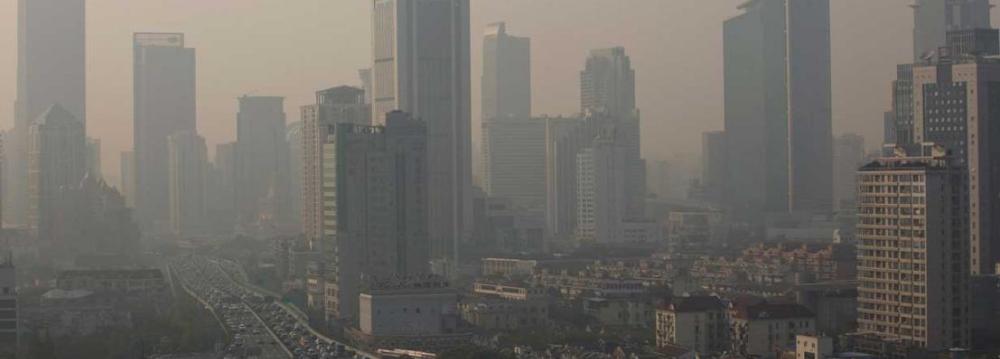Iran’s environment chief has responded to Tehran Mayor Mohammad Baqer Qalibaf’s recent claims that his office can effectively end the air pollution crisis that has become an ugly and permanent feature of the sprawling capital.
Last December, Qalibaf said “no other entity is as well-equipped as the municipality to monitor and analyze Tehran’s air quality” and challenged the government to grant his office “the legal authority to do what we must.”
Speaking to ISNA, Massoumeh Ebtekar, the head of the Department of Environment, explained why the mayor might be getting ahead of himself.
“Air pollution is a national problem that requires the enforcement of regulations across the country … no municipality has that authority, but the government does,” she said.
Ebtekar noted that the municipality has a role to play in tackling Tehran’s pollution problem and commended efforts made by Qalibaf to help address the crisis, but stressed that the TM’s jurisdiction does not go beyond Tehran.
“The municipality has played a key role in controlling the crisis and they actively participate in meetings aimed at improving the city’s air quality,” she said. “But their tasks are defined and they need to focus on their own responsibilities.”
To make her point, she pointed to the decommissioning of decrepit vehicles and monitoring gasoline quality as examples of tasks that can only be done by the government, since their outcome affects the society at large.
“Ensuring domestically-made cars comply with Euro-4 gasoline standards is a task that can only be done by an entity that has authority over all automakers in the country and the Tehran Municipality doesn’t fit the bill.”
She said every organization and department has a role to play to help tackle the air pollution crisis and urged all relevant organizations to concentrate on their duties.
Ebtekar welcomed the idea of delegating responsibilities and said her department has been working in tandem with the TM to monitor and analyze air quality.
“We’ve been cooperating very well and I hope we can continue to work effectively together,” she said.
The air pollution in Tehran over the years has emerged as a major source of serious concern for its residents struggling to understand if and when the problem will be resolved anytime soon and who is responsible for this dangerous state of affairs.
The dangerous air quality this year has extended for months this winter. For example today (Feb. 6) the air quality was terrible with smog all over the city up until the afternoon. Since the onset of the cold season, the stat-run radio and TV has been urging almost daily to avoid the streets of the capital and stay indoors due to the dirty and polluted air.
Other major cities have not been spared as they too continue to register high levels of air pollution coupled with particulate matter, smog and dust storms.
Precedent
Qalibaf’s claim that he needs more power to end the worsening air pollution might sit well with the 12 million frustrated people who reside in the capital, but the fact of the matter is, the TM is more than capable of addressing the pollution crisis with its current level of authority. After all, there is precedent.
Take for instance, Enrique Penalosa, who served as the mayor of Bogota in Colombia from 1998 to 2001 before taking office again this year. During his first stint as the mayor of an extremely polluted city, Penalosa staged a remarkable urban transformation that turned Bogota, a symbol of unmet government plans, into an international model for urban innovation.
He started a series of polices that addressed both public transit and social inequality. In 1998, private cars occupied 64% of all road space but were used by only 19% of the population. As a result, Penalosa pedestrianized large sections of the city, banned parking on pavements, raised the tax on petrol, and forced commuters to leave their cars at home at least two days a week. One Thursday every year was declared a car-free day.
He also revolutionized the bus system, turning it into a “symbol of democracy”, so that people would want to leave their cars at home rather that sit in traffic. By the time he left office in 2001, 63% of the population was using the public transportation system, up from 18% only three years before.
As he noted: “Urban transport is a political and not a technical issue. The technical aspects are very simple. The difficult decisions relate to who is going to benefit.”


